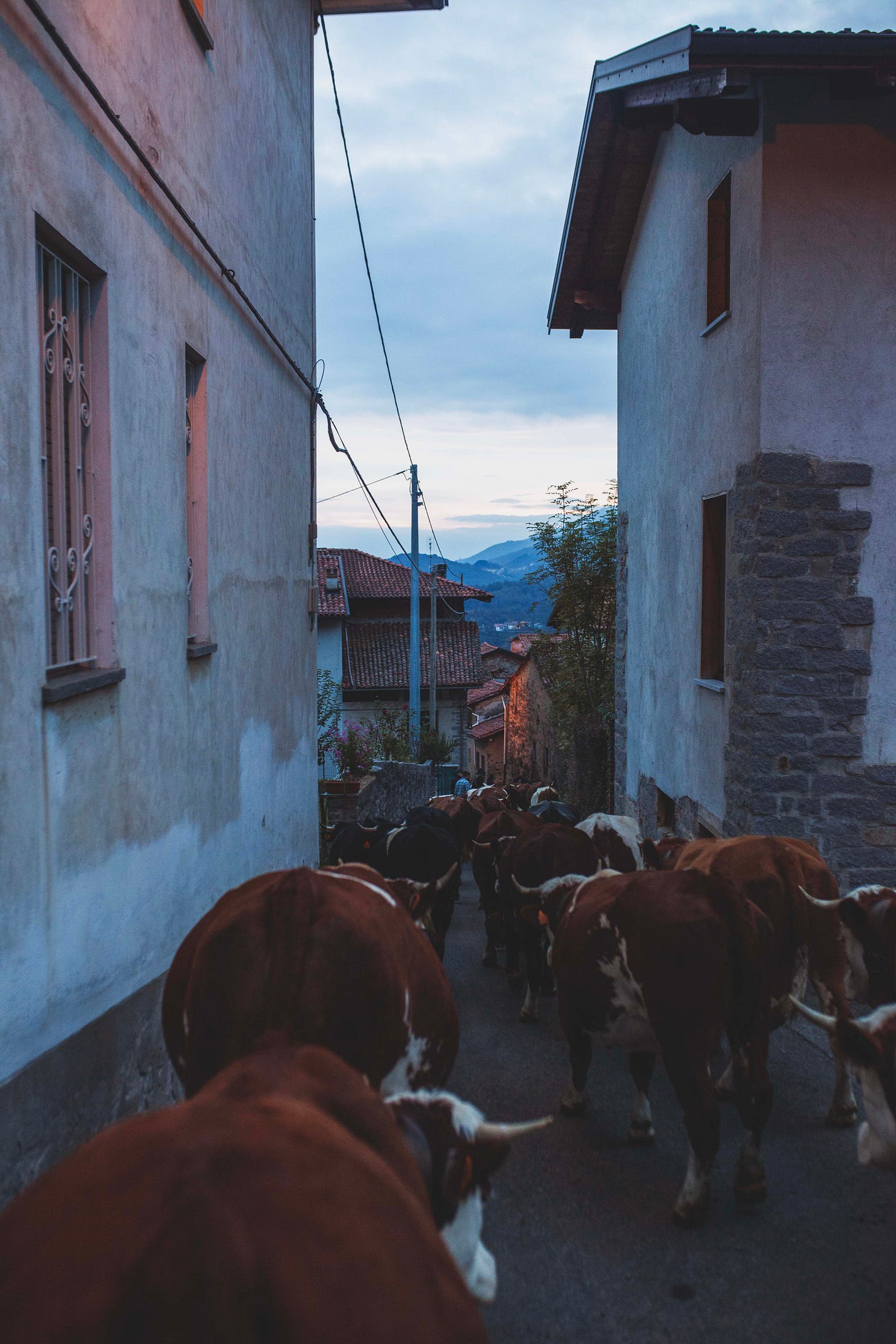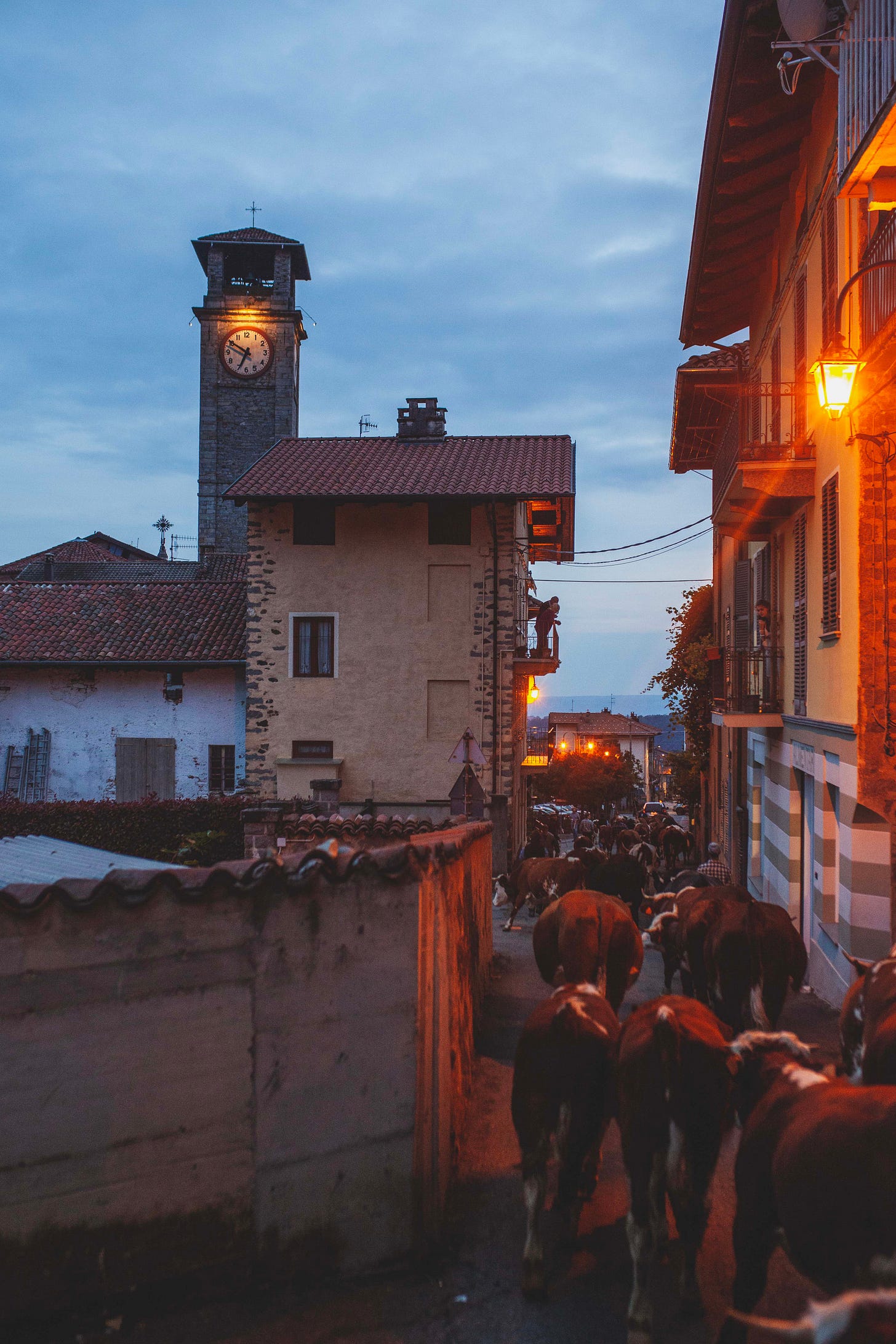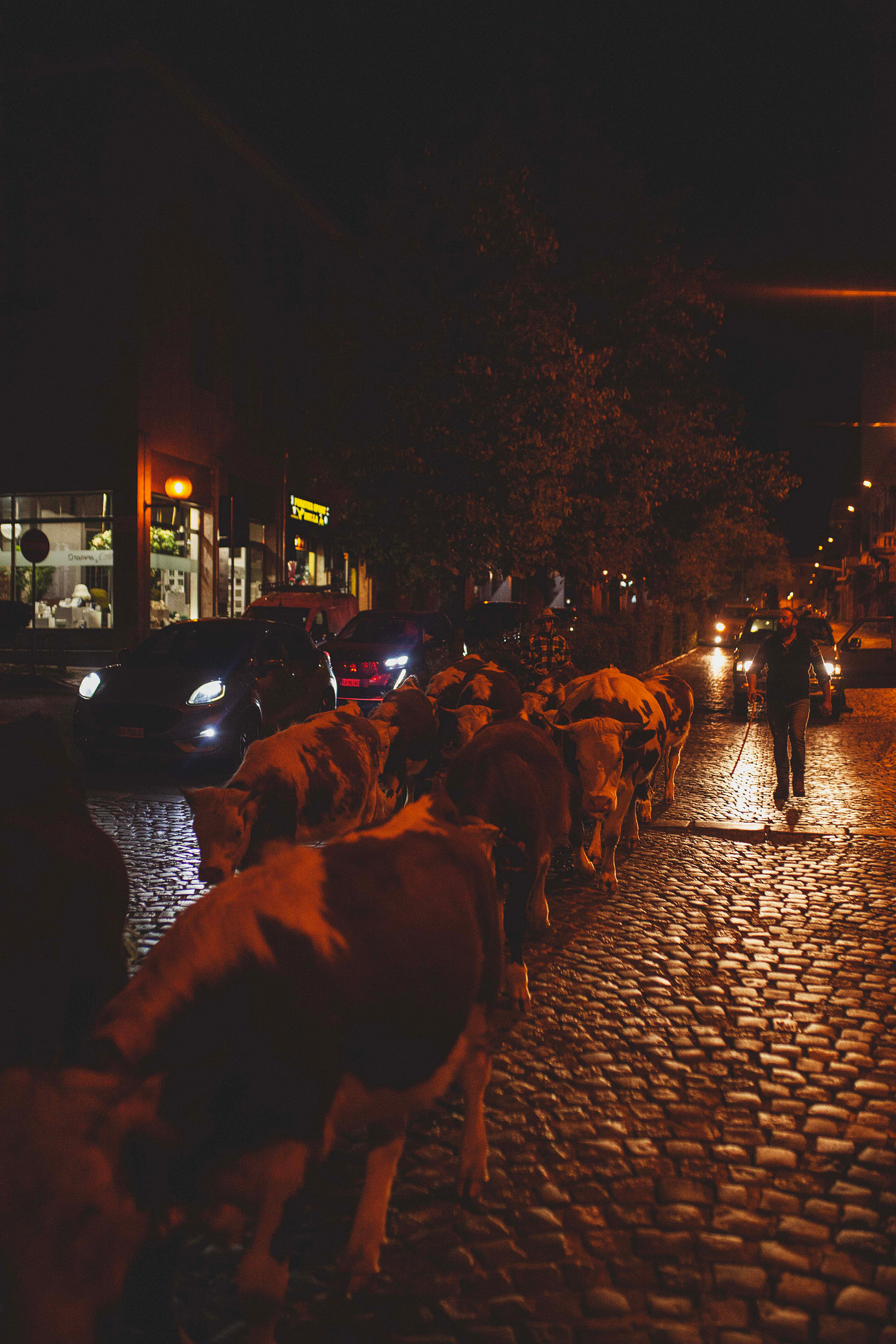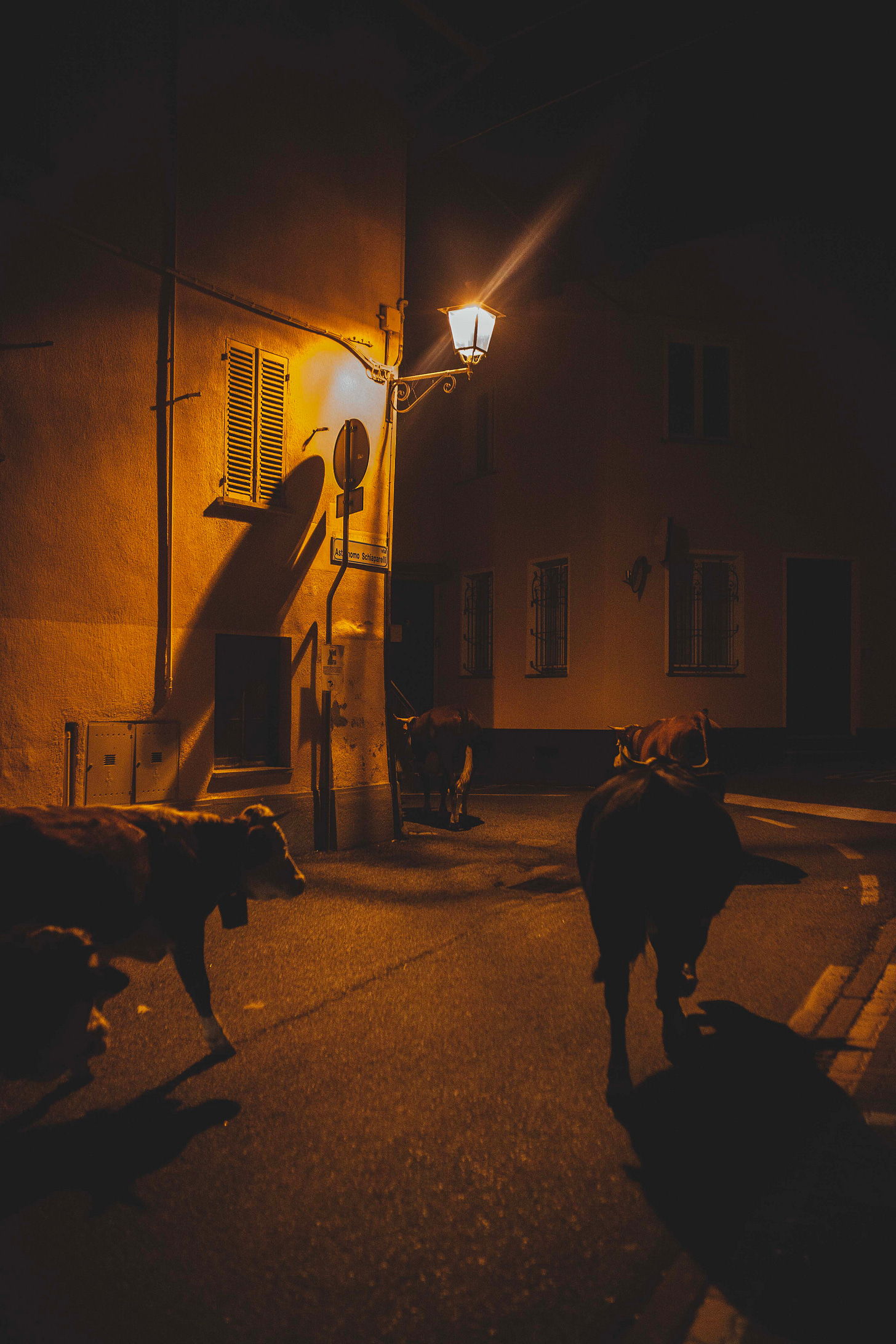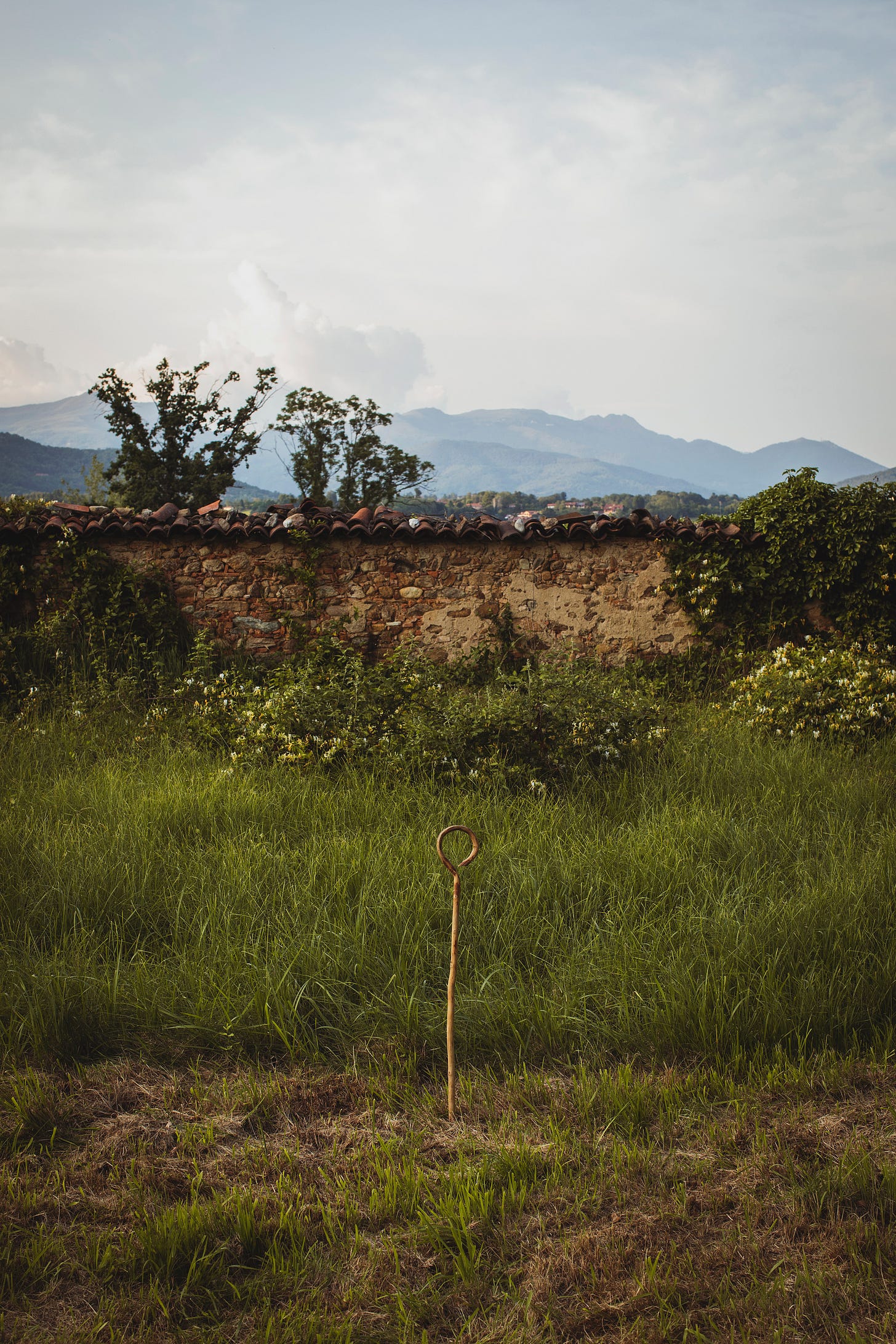THE DESALPA TRANSHUMANCE // Biella // Piemonte // ITALY // PART TWO
Part two of the autumn desalpa transhumance in Piedmont, where we drive the herd of thirty-ish cows 25km off a mountain and down through the city of Biella at night.
Here is the second half of my trip down into the valley from Bielmonte to Camburzano with thirty-odd Pezzate Rosse d’Oropa, through the tight streets of Tavigliano which is my favourite section, and I ruminate on the origin taste of raw milk alpage cheeses.
Paid subscribers get 20+ captioned photographs from the trip which I am extremely pleased with, and also first access to the podcast I made, so you can hear the beautiful bells.
LA DESALPA 2023 : PART TWO
Max Jones
Emerging from the forest, we pass the homes in the village outskirts whose inhabitants, having heard the loud bells distant in the trees above, come to their gate entrances and wave us along.
This is a profound seasonal moment for the folk of Tavigliano, who’s village lies on this old transhumance route where the wild meets civilisation. Most houses are shut and seem uninhabited, yet some belong to young families who come out with their wide-eyed children to stand by the moving herd. Most people we pass are older folk, in their eighties and beyond, standing with confidence at the entrance of their homes, talking with us herders as though we have met many times before- I think of the role we are playing out and the fondness for the transumanza in the eyes and hearts of the Biellesi that spans multiple generations.
It isn’t about us as individuals, but rather being part of the herd, part of the lifeblood and identity of places like Tavigliano. How every autumn there is a distant clattering of bells, muffled by the chestnut trees above that gets louder. I wonder what this means for the people who hear it in their own personal way, like the elderly woman who holds out coffee she has made in small cups on a silver tray for us to take. I love it. I absolutely love it. And this is what I mean. From the moment she heard the far sound of the herd above her, it’s just enough time to put the stove on and make coffee for the herders to drink quickly as they pass, knowing the flow of cows through the narrow street is unstoppable. I wonder how many times she has done this in her life, and her family before that. What it means to her. What were her thoughts while the mocha gurgled and spluttered on the stove top, as the clangour of bells grew louder. Perhaps she first saw her mother making coffee in that same spot, from the same sounds of those same bells in the nineteen-fifties, and her mother before that.
I love this part of the desalpa. The sun is setting, the main street is very narrow indeed, perhaps just three metres across. As herders, we try to block off any side-roads or alleyways, and this means inevitably getting caught right in, squashed amongst the animals. You have to make your presence known, and if you are pressed up against a wall you have to push back, hard, and wary of their horns. The cacophonous bells are amplified by the tightness of the buildings above and add to the welcome mayhem of it all, and in this moment, I am plunged into connection to what I am doing. I can smell the herd. It is a complex smell which I recognise from the more interesting cheeses I have come across on my travels, the fragrant, savoury characteristic of raw milk, alpage, farmhouse wheels. It is the unmistakable heady animal scent, very much alive, almost chewy, tropical, with cereal sweetness that comes from the clean steam of cow piss.
It is on my stick, it is on my clothes, it is on my hands, it is in my hair. It is in the milk that we take by hand from the animals. It is the taste of the Macagn’ cheese that we eat at our intervals on this downward transhumance off the mountain. It is with me on the plane when I fly home the following day. It is in the nostrils of the passport control officer.
Why I mention this is that with these true foods, when we are able to achieve access to true provenance, we are re-connected to them and their value rises. They become more delicious for this reason. And it is something that we have lost.
I think of the first time I shot a rabbit in the Outer Hebrides when I was young- there is a smell there that carries through from life into death and then life again as we eat it. It is there when you gut the animal, when you skin it, when you roll it in rosemary, garlic and oil and cook it on the fire. It is there in the taste of the meat, and it connects us to the food itself, which is of the place you find it. It is the same with all meat, and when we consume from the supermarket shelf, we are tasting it but cannot identify it, as it is a disconnected way of eating.
What is true of the rabbit is the same with Adam’s cheese. That complexity in raw-milk, farmhouse, alpine cheeses I identified as a cheesemonger and affineur in London for so many years, I realise just now was the herd itself. You can only fully place it when you have been to the other side, the point of conception, of making. Of transformation of that particular landscape into food by the people of that place.
And then we can access that glorious, nourishing idea that in eating the landscape, we become it. We have been part of every step, and we understand its context. It makes us re-evaluate food on a whole level. How the food that fuels us in this seasonal feat, is made from the very herd that need us to guide them.
After some hours, night has fallen and we arrive at a cemetery opposite a suburban supermarket on the outskirts of Biella. The cows are cordoned off to feed on the patch of green by the graves, and we set up tables and benches in the lamp-lit car park. More herders join, there are perhaps twenty of us now for this open air feast, where many hands make light work of setting up a long table and benches. Luciano the old boy and his wife Morena arrive with food that is timeless. Cotechino, a fermented salame made with tough off-cuts of their pig like the ear and snout where the potatoes are boiled in the same water, raw milk Macagn’ cheese from the herd, bull meat salame made from the herd, lasagne with mince from the herd. Onion focaccia from Adam’s girlfriend’s family. Luciano keeps handing out food, bread, flans, salame, not wanting to see any waste and knowing everyone needs feeding. There are stories, laughter, arguments, smoking, a constant rotation of seating plan. We share cheeses brought from friends in Ireland, incredible as the herders are curious, and when given a goat’s cheese from Meath, immediately say “Delicious! But this is with added starter cultures, I can smell them”
“Yes”
And then to one raw milk cheese from West Cork that is made with a natural starter culture,
“This also is good, but the milk is not fresh, warm from the cow”
“True”
I think in the past I would have been proud that I knew so much about so many cheeses from across Europe, and that my palate was not limited to just Macagn’ and toma style cheeses like the ones made in this region that I grew up with. Yet there is such nuance when you let yourself go deep into just one thing, I am quick to remember that amongst this company of herders, I am with some of the best makers and affineurs I have ever known, and I will always stand to learn from them.
In no time at all the tables were dismantled, the herd set in motion, I was shouted at by a worker clocking off from the supermarket for using her red Fiat as a table and we were away, driving the herd, down into the orange glow of Biella from the north east.
One of the principal reasons for timing the desalpa this way is to arrive into the city at night, when there is the least traffic. We try our best to occupy one lane, with the herders stretched out at even intervals in the middle of the road to allow cars to pass, slowly. Most oncoming traffic stops for us, and when the roads become narrower, we protect the cars from the cows, where it is so easy for a horn to knock off a wing mirror or dent a Maserati. It’s high-octane, as the herd will not stop and is in constant motion, with incredible communication between the herders to shout for gaps, and run between cars and cows, pushing the herd back into itself. I miss a grey Mazda, not checking to see if the herder in front of me had it covered and Adam comes running towards me shouting furiously, tapping his temple and pointing at the car.
It spins me out a little that I feel so guilty; I check myself and remember that each one of us is here to do a job, and rely on each other as part of a whole. I get back in the zone and don’t mess up again.
This is my 6th year of transhumance and I have never heard a car horn. In a country where the drivers are extremely impatient and aggressive, most folk are content to wait, smiling, usually filming the passing herd with their smartphones. It is for everyone, and understood that it cannot be rushed. It epitomises the slower life, and absolutely everyone respects that, and I really think this is why the transumanza holds such a special place in the hearts of the Biellese. The herders know it, and are proud.
Further into the centre of town, again the herd needs to be kept separate from shop fronts and parked cars, with folk coming out of bars and restaurants to be part of this continuous movement that stops everything, and then past the centre heading south-west.
Some hours pass and much like the writing of this piece, weariness really sets in. The upbeat chatter between herders as they run up and down to catch up with each other and talk has faded, everyone is dragging their feet, the cows too, with the herd beginning to split into two as those that are pregnant or old lag behind with the calves, exhausted.
As we leave the south-west edge of Biella, there is a quickening of pace. The cobblestones open to a wider road, with no traffic now it is the middle of the night. The herd moves quickly, mooing loudly, there are whoops and whistles from the herders, zuccherini do the rounds. They know that they are close to the farm, and near the end of their journey. We make one final stop in a car-park by a petrol station and bid farewell to many of the herders, who head home from this point around one o’clock, back to their respective parts of the Biellese and jobs in the morning. This stop lasts barely a quarter of an hour such is the desire to get back to the farm, and we break off the main road through the cobbled streets of another sleeping village towards Camburzano.
At this point I am weary, all thoughts have left me and I find myself walking in autopilot, legs feeling sour and spent, alongside a heifer named Viola with my hand on her back, humming a tune to the rhythmic clank of her bell, with a deep feeling of satisfaction and calm as I look up and see us warped and stretched in the convex orange road mirror from thirteen hours ago, and make a left.
I think many things as I return from this trip. I think of slowness, I think of identity and belonging. Most of all, I think of connection.
When you begin the journey, actually looking up at Bielmonte from Camburzano, it seems SO far away. Impossibly far. I am here, the mountains are over there, in the distance. They are their own thing that don’t feature in the day-to-day effervescence of the city, other than to tower above it. They are ever-present above the town, but you realise that there is no real, tangible connection after the transumanza. Perhaps it is because of the way we do things nowadays, how we have come to think that such a journey is only made achievable with a car. Yes, the car has allowed us to travel enormous distances- and yet it actually prevents us from travelling further, if you catch my drift. It disconnects us from the possibility of making these mighty journeys on foot, limiting our outlook and actual connection to the land as our feet touch the earth with each step we take.
This journey was always doable. It’s a shame that we struggle to see the world in this wonderful way nowadays.
The next morning, by the light of day I look out across Biella and back up to Bielmonte, and have not felt more deeply rooted to anywhere, ever.
And I can bring that feeling with me over the sea. Right now, as I type in my cottage in West Cork, knackered and sleep deprived, I’m munching on a wheel of Macagn’ from the herd. It’s literally right here, next to the keyboard and my blue mug of tea, and the small Spanish knife I use to cut into it. And when I eat it, I become the mountain.
This is the garden in Camburzano, and Bielmonte is the most distant mountain above. This excellent photo is by my absolute pal Heather Birnie who joined us on the Summer 23 transhumance ascent. Head to www.uptherethelast.com and punch in your email if you would like to know the dates for the upcoming trip in 2024 when they are released.
Here is a collection of beautiful captioned photographs from the section through Tavigliano and Biella at night, with the big cemetery meal and more! Please enjoy!
Keep reading with a 7-day free trial
Subscribe to Up There The Last to keep reading this post and get 7 days of free access to the full post archives.




